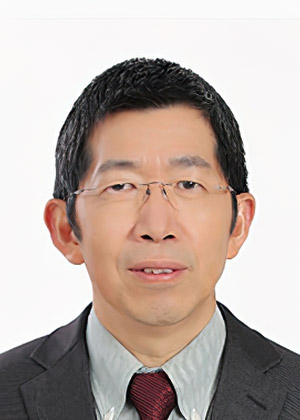
Technological Sciences

Wanming Zhai
Vehicle-track coupled dynamics
Abstract:The running train and the supporting track structure constitute an interactive and interdependent railway transportation system. For a long time, due to the complexity of dynamic interaction between moving vehicles and fixed track structures as well as the interdisciplinary reason, the vehicle and track system were separated into two relatively independent subsystems for research, forming two classical theoretical systems of vehicle dynamics and track dynamics, which have inherent limitations. It is difficult for these theories to solve the vehicle and track dynamic interaction problems caused by higher operating speed of passenger transport and greater hauling mass of freight transport during the development of modern railway transportation. Therefore, Dr. Wanming Zhai treated the vehicle subsystem and the track subsystem as a large integrated system by establishing a wheel-rail spatial dynamic coupling model, and thus a new theoretical framework of vehicle-track coupled dynamics was developed interdisciplinarily, involving academic rationale, theoretical models, solution algorithms, simulation strategies, and testing methods, and the core model and algorithm are respectively well known as Zhai model and Zhai method. Based on this theory, he proposed the principle and methodology for optimal matching design of dynamic performance between rolling stock and railway line, and led his team to develop the corresponding analysis and design software of the dynamic interaction as well as the field test evaluation system. A large number of field tests and engineering practice have fully proved its scientificity and practicability. This new theory ended the long research history of separating vehicle dynamics and track dynamics, and currently it has become the fundamental method for research on railway engineering dynamics, with extensive applications in the field of high-speed and heavy-haul railway engineering in China, which strongly supports the development of railway modernization.
Awardee:Wanming Zhai, born in August 1963 in Jingjiang, Jiangsu province, is a Chair Professor at Southwest Jiaotong University (SWJTU), an Academician of Chinese Academy of Sciences (CAS), an International Member of U.S. National Academy of Engineering (NAE), and a well-known expert in the field of railway engineering. He graduated from the Department of Mechanical Engineering of SWJTU in 1985, and received his doctoral degree in railway vehicle engineering from the university in 1992. In 1994, he was awarded the title of National Young and Middle-aged Experts with Outstanding Contributions. In 1995, he was funded by the National Science Foundation for Distinguished Young Scholars. From July to September in 1998, he was invited to lecture at Technical University of Denmark (guest professor). Currently, he is the Chairman of Academic Committee of SWJTU, the convener of the Disciplinary Evaluation Group of Transportation Engineering of Academic Degrees Committee of the State Council, a board member of International Association of Vehicle System Dynamics (IAVSD), and the Editor-in-Chief of both the International Journal of Rail Transportation and the Railway Engineering Science.
Professor Wanming Zhai has long been engaged in the research of railway engineering dynamics. He developed a new theoretical framework of vehicle-track coupled dynamics, proposed the principle and methodology for optimal matching design of dynamic performance between rolling stock and railway line, and directed the research on the establishment of the high-speed train-track-bridge dynamic interaction theory and safety assessment technology. His research work has an important influence around the world, where the unified vehicle-track coupled dynamics model and the fast explicit numerical integration method, internationally recognized as Zhai model and Zhai method respectively, are extensively adopted in the research of this field. His research achievements are widely used in high-speed railway, heavy-haul railway and urban rail transit engineering in China, resulting in substantial social and economic benefits. He was given the First-class National Science and Technology Progress Award, and the Second-class National Science and Technology Progress Awards (twice). His research achievements were successively selected into the “Top Ten Scientific and Technological Progress of Chinese Universities” (twice), the “National Large-scale Achievement Exhibition of the 40th Anniversary of Reform and Opening-up”, and the “National 13th Five-Year Scientific and Technological Innovation Achievement Exhibition”. He was given to the Chinese Young Scientist Award, the Ho Leung Ho Lee Innovation Award in Science and Technology, the First-prize Chang Jiang Scholars Achievement Award, the National Innovation Competition Certificate, the National Railway Locomotive Medal, and the National Labor Medal.